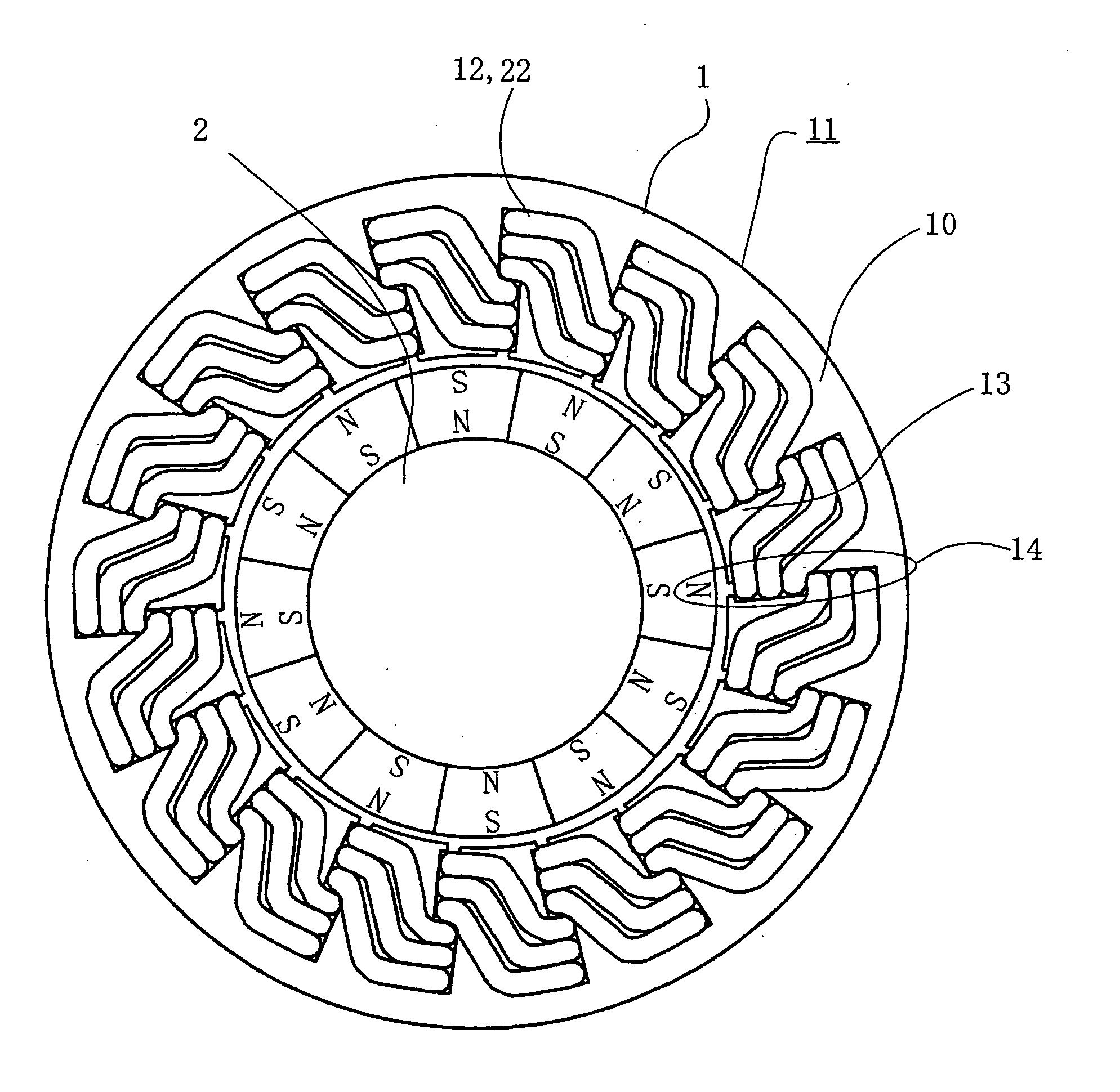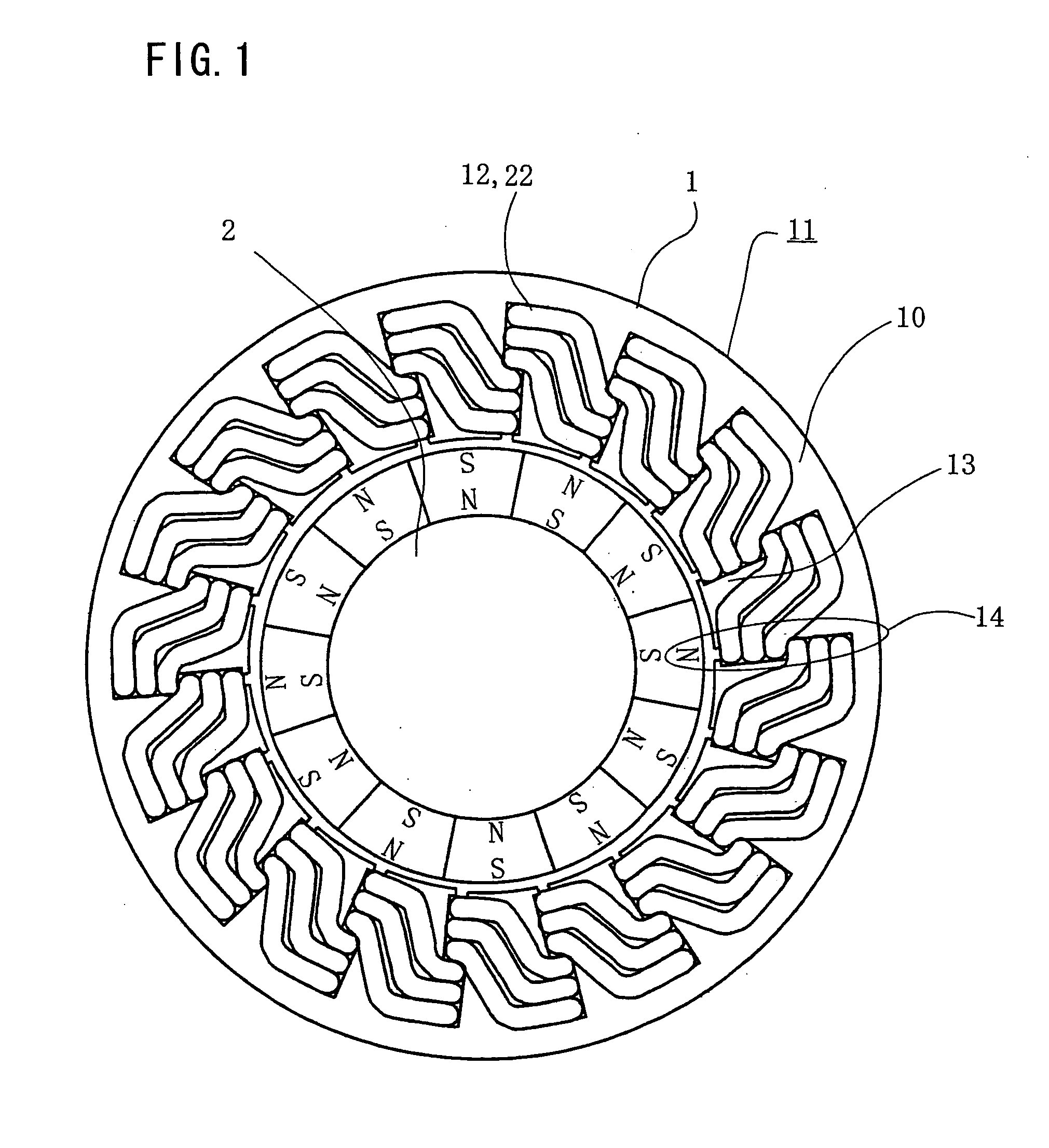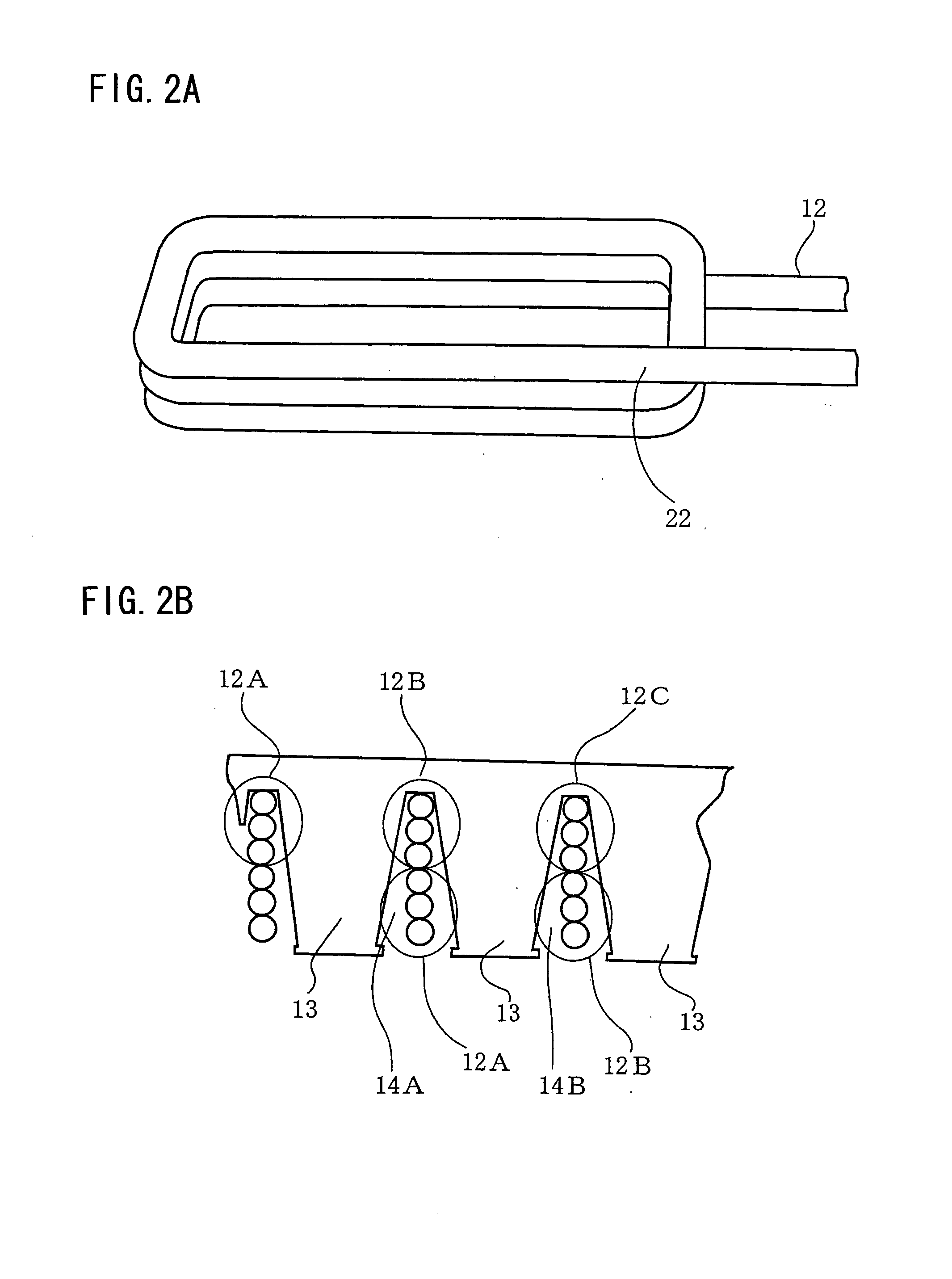Stator of rotating electric machine and manufacturing method of the stator
a technology of rotating electric machines and manufacturing methods, which is applied in the manufacture of stators/rotor bodies, magnetic bodies, and magnetic circuit shapes/forms/construction, etc., can solve the problems of increased size of rotating electric machines, fluctuation of output torque and other output characteristics, and decrease in space factor, so as to improve the stability of output characteristics, facilitate the assembly of coils, and reduce the effect of space factor
- Summary
- Abstract
- Description
- Claims
- Application Information
AI Technical Summary
Benefits of technology
Problems solved by technology
Method used
Image
Examples
first embodiment
[0027]FIG. 1 is a cross-sectional diagram of a rotating electric machine according to a first embodiment of the invention. FIG. 2A is a perspective diagram showing the shape of each coil unit 12 assembled into a stator 1 of the rotating electric machine of the first embodiment, and FIG. 2B is a cross-sectional diagram showing how a plurality of coil units 12 are fitted.
[0028] Referring to FIG. 1, the rotating electric machine includes the aforementioned stator 1 which serves as an armature (or an assembly including main current-carrying conductors), a rotor 2 which serves as a field-generating assembly, and a bracket (not shown) in which the stator 1 and the rotor 2 are held on a common axis.
[0029] The stator 1 surrounding the rotor 2 includes a stator core 11 and the aforementioned coil units 12. The stator core 11 is built up by laminating a plurality of thin electromagnetic steel sheets to a thickness needed, in which layers of the electromagnetic steel sheets are joined togeth...
second embodiment
[0037]FIGS. 3A and 3B are cross-sectional diagrams of conductors 22 used in a stator 1 of a rotating electric machine according to two varied forms of a second embodiment of the invention. The conductor 22 shown in FIG. 3A has a slightly flat cross section having two flat surfaces, as if produced by flattening a round conductor from two opposite sides, whereas the conductor 22 shown in FIG. 3B has a square cross section having four flat surfaces.
[0038] If the coil unit 12 shown in FIG. 3A or 3B is used for producing individual coil units 12, it is possible to wind and stack successive turns of windings in such a manner that the flat surfaces of adjacent lines of the flat or square conductor 22 are placed face to face with each other. This arrangement serves to decrease a gap between one turn and the next of each conductor 22, making it possible to improve the space factor of windings in individual slots 14.
third embodiment
[0039]FIG. 4 is a fragmentary perspective view of a stator 1 of a rotating electric machine according to a third embodiment of the invention, showing in particular a principal part of the stator 1.
[0040] In this embodiment, individual coil units 12 are fitted in a stator core 11 such that ends 23 of the coil units 12 are taken out of successive slots 14 from one axial end of the stator core 11 in a staggered form. Specifically, one outgoing end 23 of a coil unit 12A is taken out from an innermost layer in one slot 14 and the other outgoing end 23 of the coil unit 12A is taken out from an outermost layer in the adjacent slot 14 as illustrated in FIG. 4. Likewise, one outgoing end 23 of an adjacent coil unit 12B is taken out from an innermost layer in one slot 14 and the other outgoing end 23 of the coil unit 12B is taken out from an outermost layer in the adjacent slot 14.
[0041] Since the ends 23 of the individual coil units 12 serving as connecting parts thereof are concentrated a...
PUM
| Property | Measurement | Unit |
|---|---|---|
| thickness | aaaaa | aaaaa |
| electromagnetic | aaaaa | aaaaa |
| size | aaaaa | aaaaa |
Abstract
Description
Claims
Application Information
 Login to View More
Login to View More - R&D
- Intellectual Property
- Life Sciences
- Materials
- Tech Scout
- Unparalleled Data Quality
- Higher Quality Content
- 60% Fewer Hallucinations
Browse by: Latest US Patents, China's latest patents, Technical Efficacy Thesaurus, Application Domain, Technology Topic, Popular Technical Reports.
© 2025 PatSnap. All rights reserved.Legal|Privacy policy|Modern Slavery Act Transparency Statement|Sitemap|About US| Contact US: help@patsnap.com



